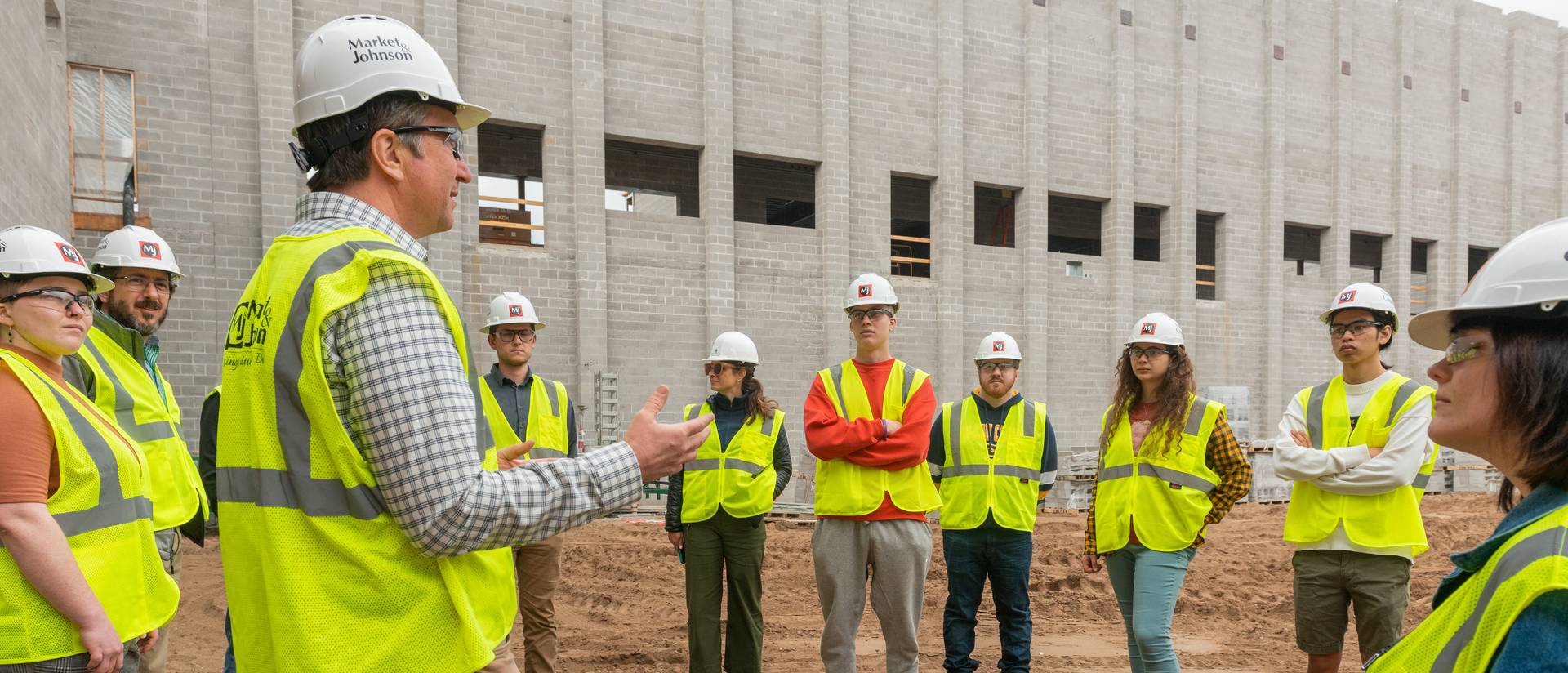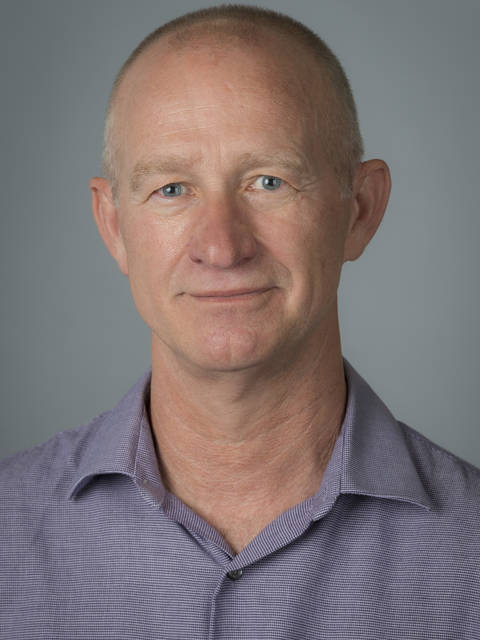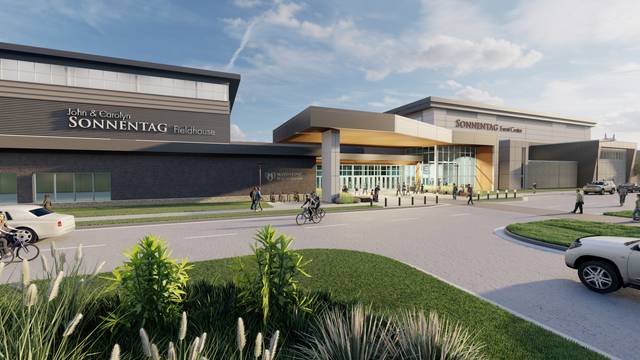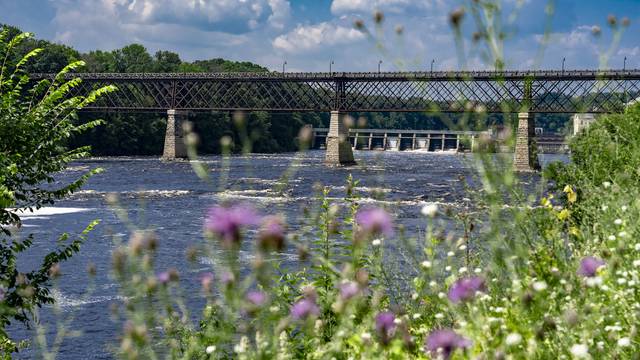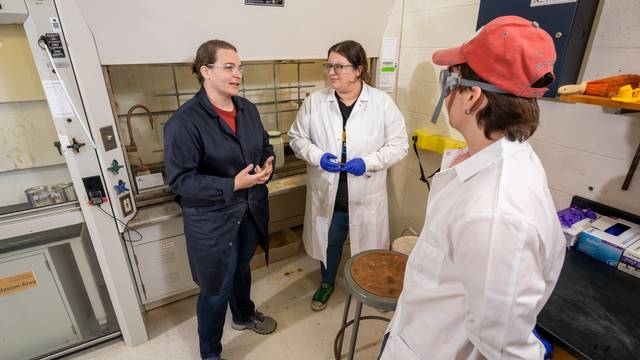Photo caption: Students in Dr. James Boulter’s environmental studies class got an up-close look at construction of the County Materials Complex to examine sustainable design features.
Environmental studies students at the University of Wisconsin-Eau Claire have a rare opportunity to examine firsthand the installation of geothermal heating technology and other sustainable design features in the $122 million County Materials Complex.
About 20 Blugolds in the fall and spring classes of the course Building Sustainability in the Academy are following construction of the project along Menomonie Street as the building becomes UW-Eau Claire’s first Leadership in Energy and Environmental Design-certified green structure. LEED certification is a recognized achievement to improve energy efficiency and reduce the carbon footprint of facilities.
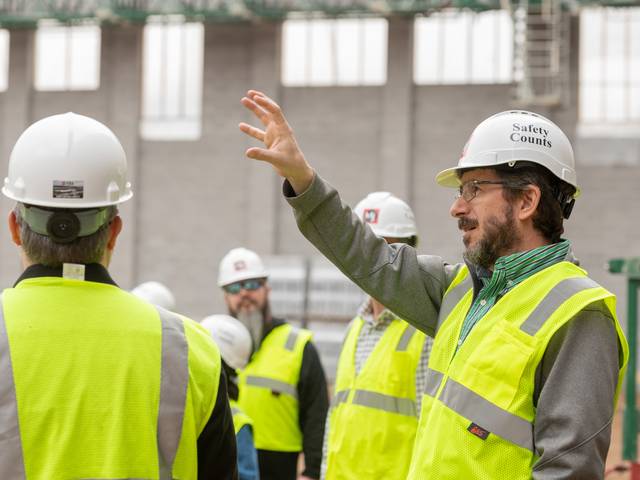
Dr. James Boulter says the firsthand look at the complex had his students "super engaged."
“They’re learning fundamental principles of sustainability but they’re applying it to not just a specific case — like a case study analysis — but it’s part of their campus that they are helping to pay for,” Dr. James Boulter, professor of chemistry in UW-Eau Claire’s public health and environmental studies department, says of the students in his class. “Maybe some of them will graduate here and others will come back as alumni and they’ll have this incredibly special relationship knowing some of the really arcane details about the building, about how it was constructed and all the thinking that went into making this a super-sustainable building.”
Land that was an industrial site for about 150 years — it was a sawmill, blacksmith shop and concrete plant over the years — along Menomonie Street will become a redeveloped brownfield site with one of the most advanced and sustainable buildings in western Wisconsin.
UW-Eau Claire students got a glimpse recently of the 21-acre site and installation of one of the primary sustainability features of the complex — a ground source heating and cooling system. The geothermal technology uses energy from the earth to heat and cool the 172,000-square-foot complex, scheduled to open in May 2024.
Work crews are drilling 190 wells that are 500 feet deep, a total of 95,000 feet or about 18 miles of piping for the geothermal system. About 115 wells have been drilled so far.
“The students were super engaged,” Boulter says. “It’s what they hear about — energy efficiency and technology — but here they get to see it as it comes into being. Geothermal is confusing to people. I think this is the best way to understand it.”
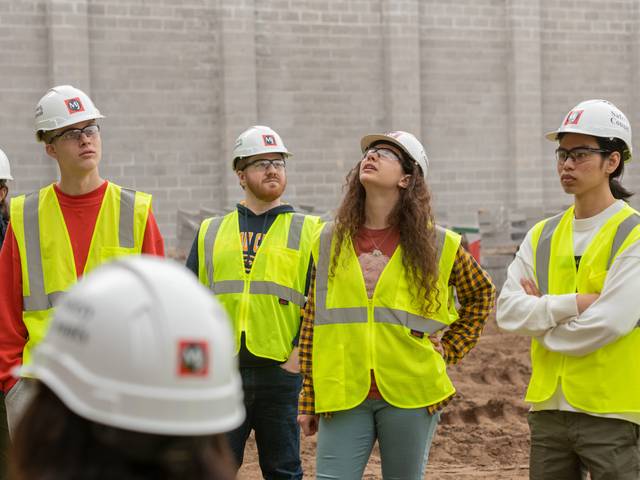
Anakah Denison, second from right, says the study of the County Materials Complex is "a real cool intersect of architecture and engineering and sustainability and biology.”
Anakah Denison of Rice Lake, a senior ecology and environmental biology major with a certificate in geospatial information systems, says the behind-the-scenes look at the complex construction was exciting.
“The sheer scale of it is just insane to me, especially learning about how they are drilling the wells,” says Denison, who will graduate in May. “It’s really fascinating knowing how much technology and attention to detail goes into drilling these wells. Being able to hear stories from people who have decades in the industry is just incredible.”
Denison says the study of the complex is detailed and brings together multiple disciplines not seen in many classes.
“It’s a real cool intersect of architecture and engineering and sustainability and biology,” Denison says. ”All these different majors and realms kind of come together on a project that is as big as this, that really impacts not only the university but the larger community as well.”
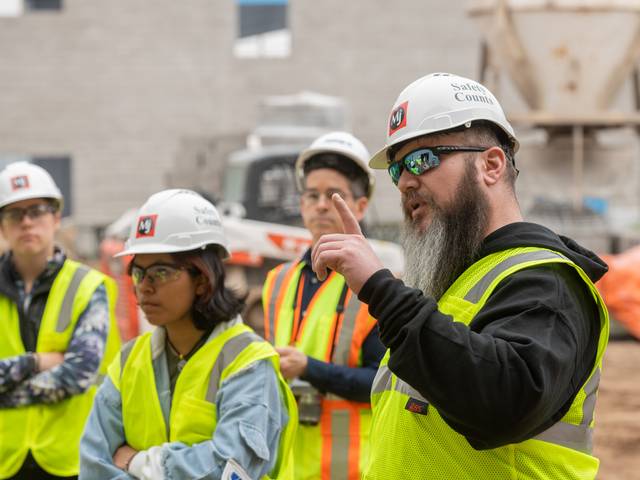
Tim Wysocky, right, was intrigued by the geothermal system.
First-year student Tim Wysocky of Altoona, who is majoring in pre-engineering, was interested in the geothermal system at the County Materials Complex because he wants a career dealing with alternative power sources.
“I’ve done a lot of my own research on it and to actually see something like this is very intriguing, especially being able to sustain a system of this size,” Wysocky says. “It is really cool to actually be able to see it versus reading about it, especially before it is all developed, being able to see all the different lines sticking up and being able to watch them drill. You just don’t get to see that.”
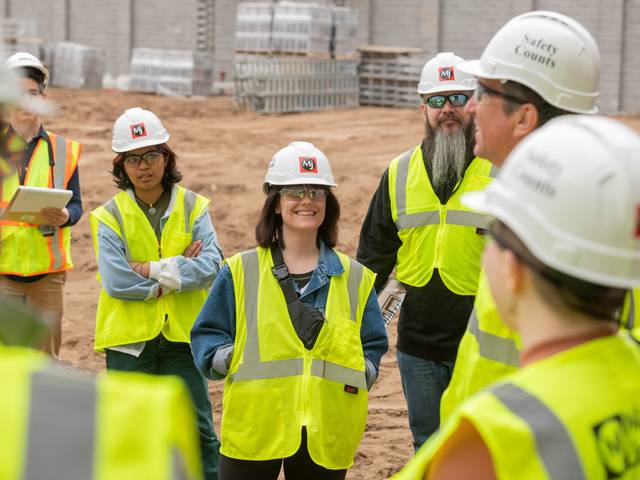
Sierra Szydel, center, is pleased to see the addition to her hometown of Eau Claire.
Junior Sierra Szydel says the building will be a great addition to her hometown of Eau Claire and she is thankful the class allowed her to get a look at the project’s early stages.
“I think it was really cool to get into the skeleton of the building and be able to see what it looks like before it’s built,” says Szydel, who is majoring in public health. “I think that’s a unique opportunity that not a lot of people get to have.”
Boulter credits Greenwood Consulting Group — the LEED building consultants on the project — and Ayres Associates for setting up the tour of the complex. Regular interactions with Greenwood’s sustainability experts further enhanced Blugolds’ learning throughout the class, Boulter says.
John and Carolyn Sonnentag donated $70 million for the County Materials Complex in 2021 and ground was broken in April 2022.
The complex will house the Sonnentag Event Center and John and Carolyn Sonnentag Fieldhouse, making it the largest indoor event venue in northwest Wisconsin. The Mayo Clinic Health System Diagnostic Imaging and Sports Medicine Center also will be in the complex.
Pablo Foundation is providing nearly $10 million toward the sustainability efforts in the complex, which allows for the geothermal system and other features such as high-performance window glazing and additional insulation. The city of Eau Claire and Xcel Energy also provided funding for sustainability efforts.
UW-Eau Claire students have provided $350,000 to the project to support LEED certification and WELL Health-Safety Rating (HSR) that includes features such as air and water quality monitoring, and other cleaning and sanitation practices.
